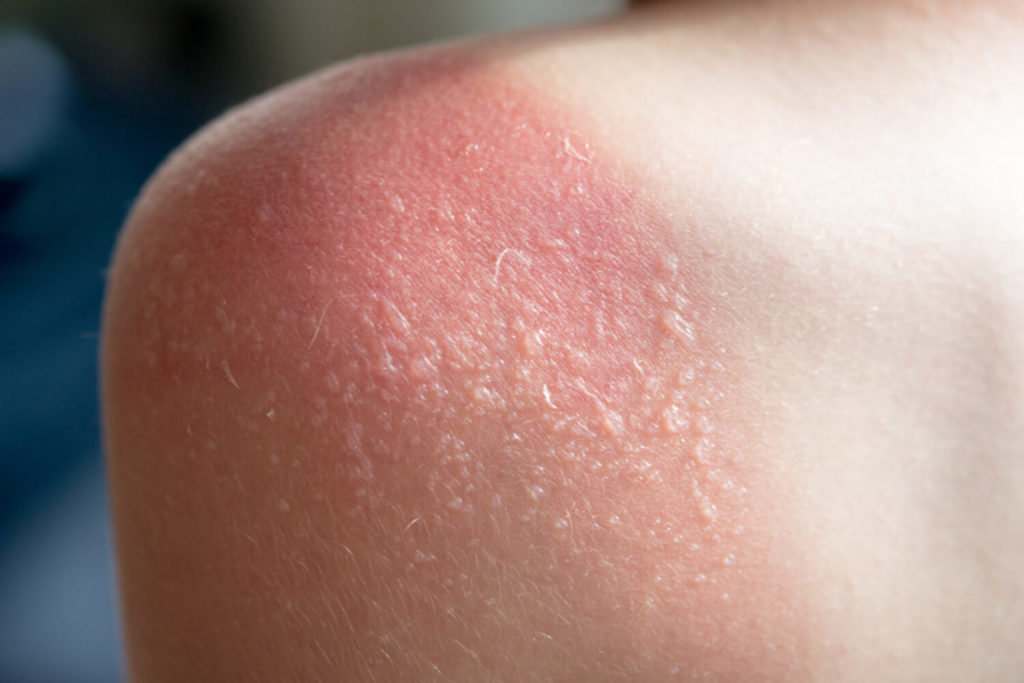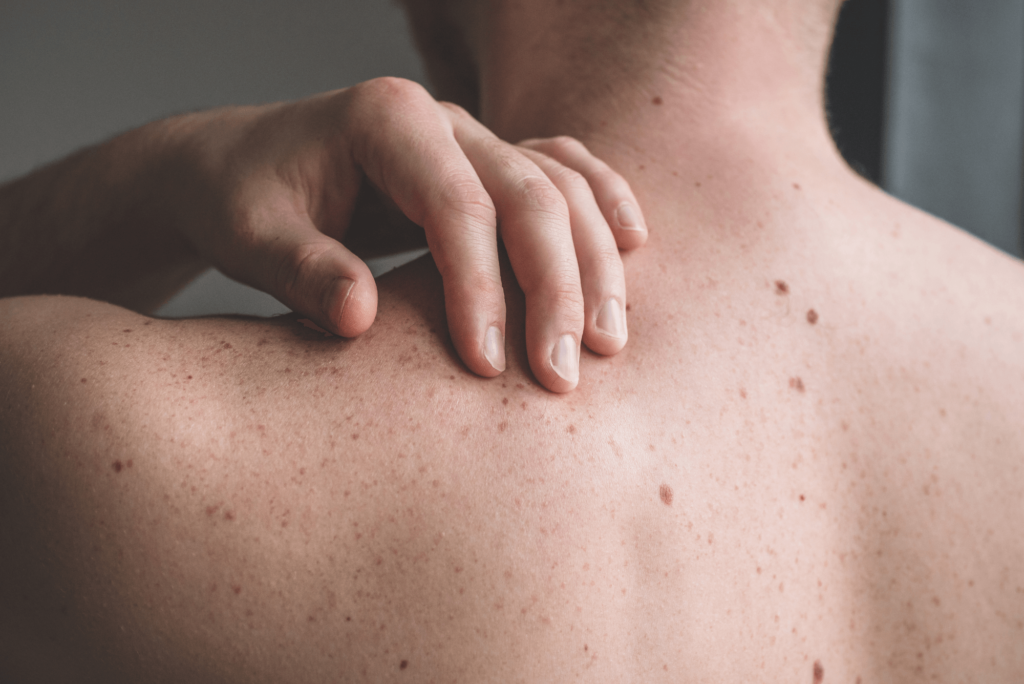Many of us have moles or freckles on our bodies that we see every day. In Tennessee it is common to have sun spots as well. Sometimes, we forget about their existence entirely—that is, until we notice a subtle change in their appearance, whether it’s the shape, color, or size. When this happens, it’s essential that you reach out to a skincare specialist to identify whether these differences are a sign of something more serious.
What is Melanoma?
Melanoma is a severe form of skin cancer that starts in the skin cells, which are called melanocytes. These specific cells produce melanin, the pigment responsible for our skin’s color. And the longer these cells are exposed to sunlight, the more they produce melanin, giving you a darker complexion.
After a long, hot summer, many Tennesseans may be examining our skin for concerning spots. When your skin receives too much UV light, your body’s melanocytes may start to grow abnormally and become cancerous, which is an early sign of melanoma. Melanoma typically affects the upper body, head, and neck, but it can also develop in the lower legs or other areas of the body.
Is Melanoma the Same as Basal Cell Carcinoma?
Although melanoma and basal cell carcinoma (BCC) are types of skin cancer, BCC is much more common. Basal cell carcinoma is the most common cancer in the world. This is the case in Tennessee as well. Basal cell carcinoma typically occurs on parts of the body that are more susceptible to sunlight, such as the face, ears, neck, scalp, shoulders, and back. According to the Skin Cancer Foundation, BCC typically doesn’t spread to other areas of the body but remains in a concentrated area.
Melanoma is a different story, however. If left untreated, melanoma can actually grow deep within the skin cells and spread to other parts of the body, including other internal organs.
FAQs About Melanoma
Because melanoma has the potential to spread to other areas of the body, early detection is essential to your long-term health and wellness. Below are some common questions to help you understand and recognize it symptoms.
What Symptoms Are Associated with Melanoma?
According to the Melanoma Education Foundation, the ABCDEs of Melanoma include:
(A) Asymmetry
(B) Border
(C) Color
(D) Diameter
(E) Elevation
Unlike benign moles, which typically have a symmetrical shape, even bordered, single color, smaller diameter, and consistent size, melanoma has the complete opposite effect. If you notice any changes in a mole or freckle, or if you discover the onset of a new mole changing shape or color, it’s best to contact Tennessee TeleDerm to have it checked by an experienced dermatology specialist.
How Fast Does Melanoma Spread?
Melanoma can happen at any time, with little to no warning (UCSF Health). There are four stages of melanoma, with stage IV being the most severe (Seattle Cancer Care Alliance). Though it’s hard to predict how fast the disease can spread, detecting symptoms in its early stages is the best defense against this type of skin cancer.
How Can I Avoid the Spread of Melanoma?
It’s recommended that you examine your moles and freckles every month to get familiar with their size, color, and shape, so it’s much easier to detect any subtle—or not so subtle—changes. Remember the earlier you can detect melanoma, the less chance it has to spread and become a threat to your health.
In addition to regular self-examination, be sure to reduce your sun exposure, wear plenty of sunscreen, and avoid tanning beds. If you’re going to be outdoors for extended periods of time, remember to cover your head with a hat and try to stay in shaded areas. Sun protection is especially important in Tennessee, where the sun’s rays are strong many months of the year.

Is Melanoma Hereditary?
According to the American Cancer Society, “Around 10% of all people with melanoma have a family history of the disease…The increased risk might be because of a shared family lifestyle of frequent sun exposure, a family tendency to have fair skin, certain gene changes (mutations) that run in a family, or a combination of factors.”
If anyone in your immediate family has already experienced symptoms of melanoma, it’s recommended that you meet with a skincare specialist to check your moles regularly and stay clear of tanning beds. The American Cancer Society also notes that if you are male, you may be at a higher risk of developing the disease, especially if you are over the age of 50, so be aware and get checked!
Is Melanoma Treatable?
Because melanoma is a serious and sometimes life-threatening cancer, it must be treated in its early stages to prevent it from affecting other areas. In fact, once melanoma has spread to other parts of the body beyond the skin, it may be difficult to treat. Therefore, it’s important to contact Tennessee TeleDerm so that an expert in dermatology can check for your skin early signs. At Tennessee Telederm we can perform a biopsy of any suspicious mole or growth to confirm the diagnosis. If it’s determined that you have melanoma, we may recommend excisional surgery to remove the entire growth, along with the surrounding border of normal skin to ensure all affected cells are removed.
Getting Your Skin Checked
Recognizing the early signs of melanoma on your own is important, but it’s also good practice to have a skincare specialist monitor your moles and freckles routinely, as well. It’s recommended that you schedule a full body skin cancer screening annually, or as recommended by your dermatologist. Fall is a great time to have your skin checked!
When it comes to your skin’s health, always play it safe! The next time you notice a suspicious mole, contact Tennessee TeleDerm to have it professionally examined. We’ll walk you through your options and help you find the best medical dermatology treatment to keep your skin healthy, strong, and clear of melanoma.




